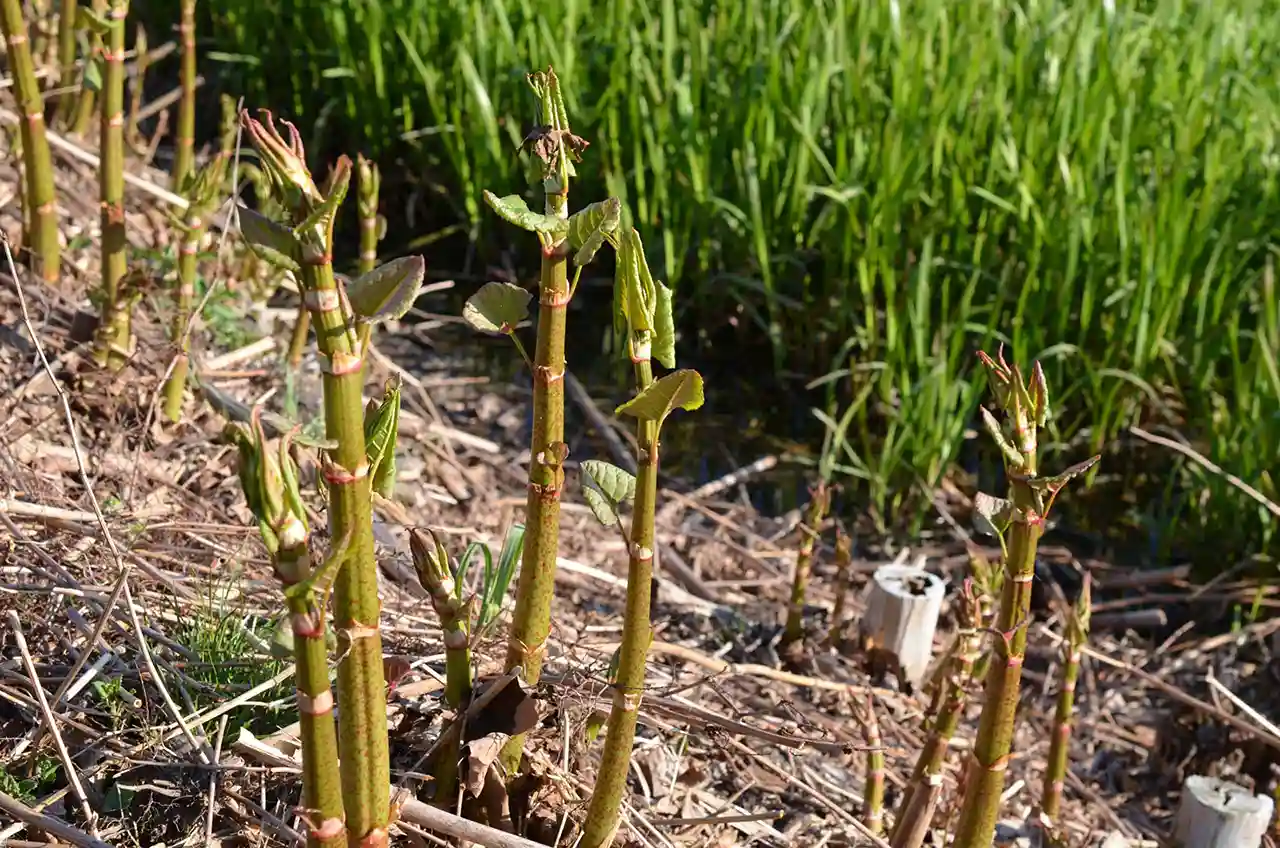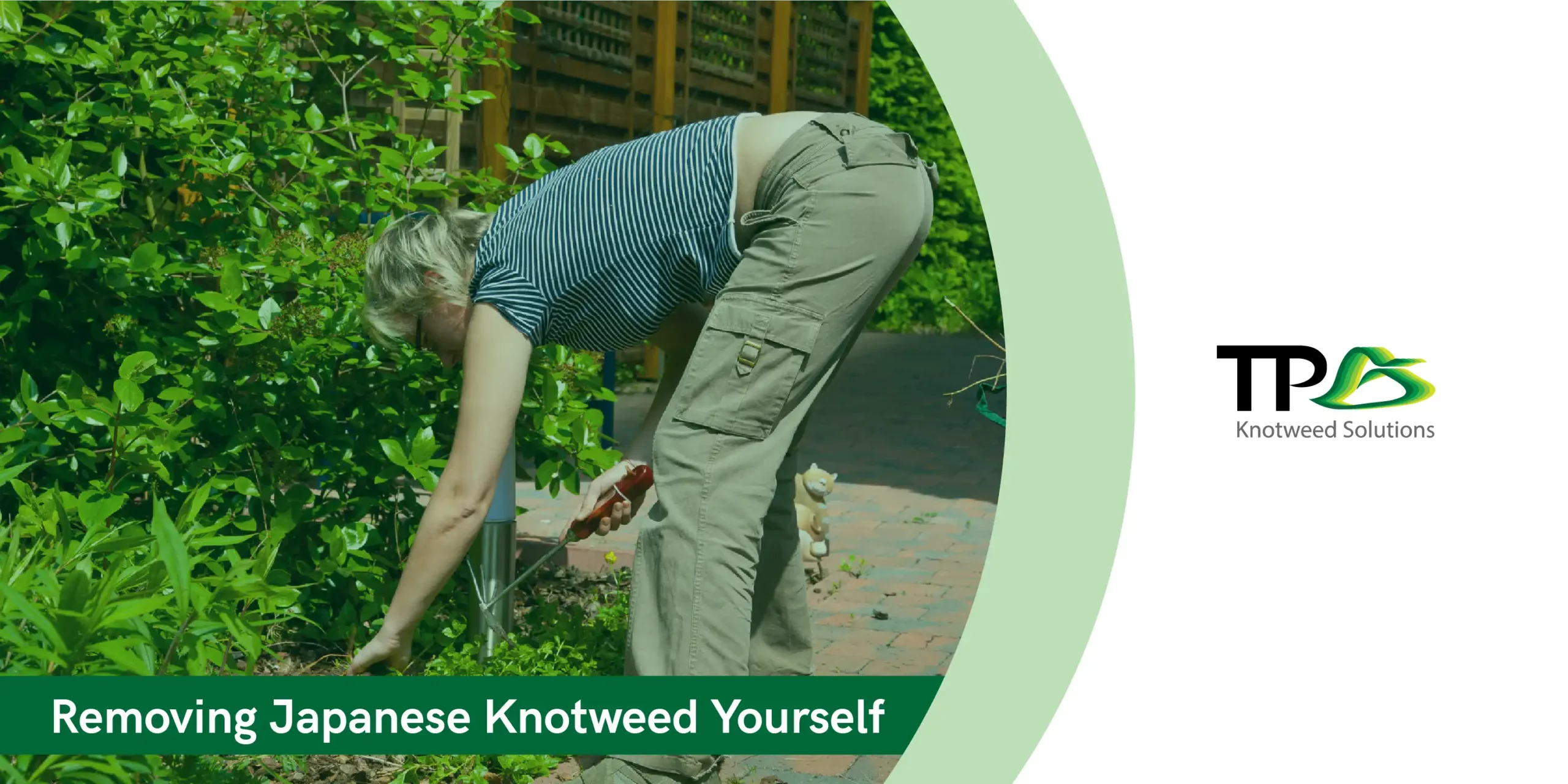Below we will answer the question; ‘How does Japanese knotweed spread?’ While also covering the plant’s characteristics and the legal responsibilities we face should we find Japanese knotweed on our land. We will also focus on some other important sub-questions including ‘How fast does knotweed grow?’ and ‘How far does knotweed spread?’ This information is essential in helping us understand, effectively treat, remove and remove the invasive weed.
The following areas will be covered in this article:
- How does Japanese knotweed spread?
- How fast does Japanese knotweed spread?
- How far can Japanese knotweed spread?
- Can Japanese knotweed spread by seeds?
- Can animals spread Japanese knotweed in their excrement?
- Can Japanese knotweed spread on shoes?
- How to stop Japanese knotweed growing?
How does Japanese knotweed spread?
Understanding the origins of Japanese knotweed is key to informing our understanding of its spread in the UK.
Japanese knotweed (also known as Fallopia japonica) is a native of Japan and was introduced during the Victorian period as an ornamental garden plant. However, due to its ability to spread and cause extensive structural damage to driveways, roads and property foundations it has been subject to legislation since 1990. This legislation seeks to regulate the plant to attempt to control the spread of Japanese knotweed.
The fact that Japanese knotweed is a non-native plant goes some way to explaining how it spreads, and how its spread is limited. As a gynodioecious plant, Japanese knotweed has female and hermaphrodite forms which are needed in proximity for the weed to spread via its seeds. This nature of spreading doesn’t happen in UK because only the female variant of Japanese knotweed was ever imported. As Japanese knotweed was unable to spread and thrive via seed dispersal it has had to find another way to spread, and it has done so very effectively.
Unlike many other invasive weeds, Japanese knotweed seeds are not responsible for the plants spread; it is spread predominantly via its complex underground root system or by its stems or crowns.
Japanese knotweed typically spreads through its underground rhizome, or root, system. When a Japanese knotweed’s root system is disturbed the plant’s spread is facilitated; a new Japanese knotweed shoot can grow from a rhizome fragment as small as 2mm wide. For example, if you have a knotweed plant in your garden it is likely that its underground root system spreads far beyond the reach of the visible, above ground plant. If you dig anywhere within 7 metres of the infestation it is possible that you will disturb the Japanese knotweed’s root system. The dug-out soil you have collected could well contain tiny fragments of Japanese knotweed rhizome which are not always visible. If you choose to use this soil in another area of your garden, and any small portion of the plant is left in the soil, it can very quickly re-sprout. This will likely lead to another area of Japanese knotweed growth. As such, knotweed plants spread quickly and it is easy to appreciate how accidental spread of the plant could occur.
We know that Japanese knotweed is a highly invasive, fast-growing weed which can grow at speeds of 10cm a day. Japanese knotweed is very strong plant, this characteristic has helped to ensure its survival and spread. knotweed’s strong, robust plant structure means it can thrive in a wide range of growing conditions. Soil pH or salinity has little impact on the growing rate of the plant, and it can survive temperatures as low as -35°C.
Understandably, you would want to remove this weed from your garden, or land, but its complex underground rhizome network makes this a hard species to remove yourself. Simply pulling the plant up yourself will not stop the spread but could cause it to spread even faster. Only killing the entire underground Japanese knotweed rhizome system will guarantee the removal of the plant. Under the 1990 Environmental Protection Act Japanese knotweed is now classed ‘controlled waste’ which means that it must only be disposed of into licensed landfill sites to stop further spread. Given Japanese knotweeds characteristics, and the legislation surrounding it, we recommend that any attempts to remove knotweed should be carried out by licensed professionals.
How fast does Japanese knotweed spread?
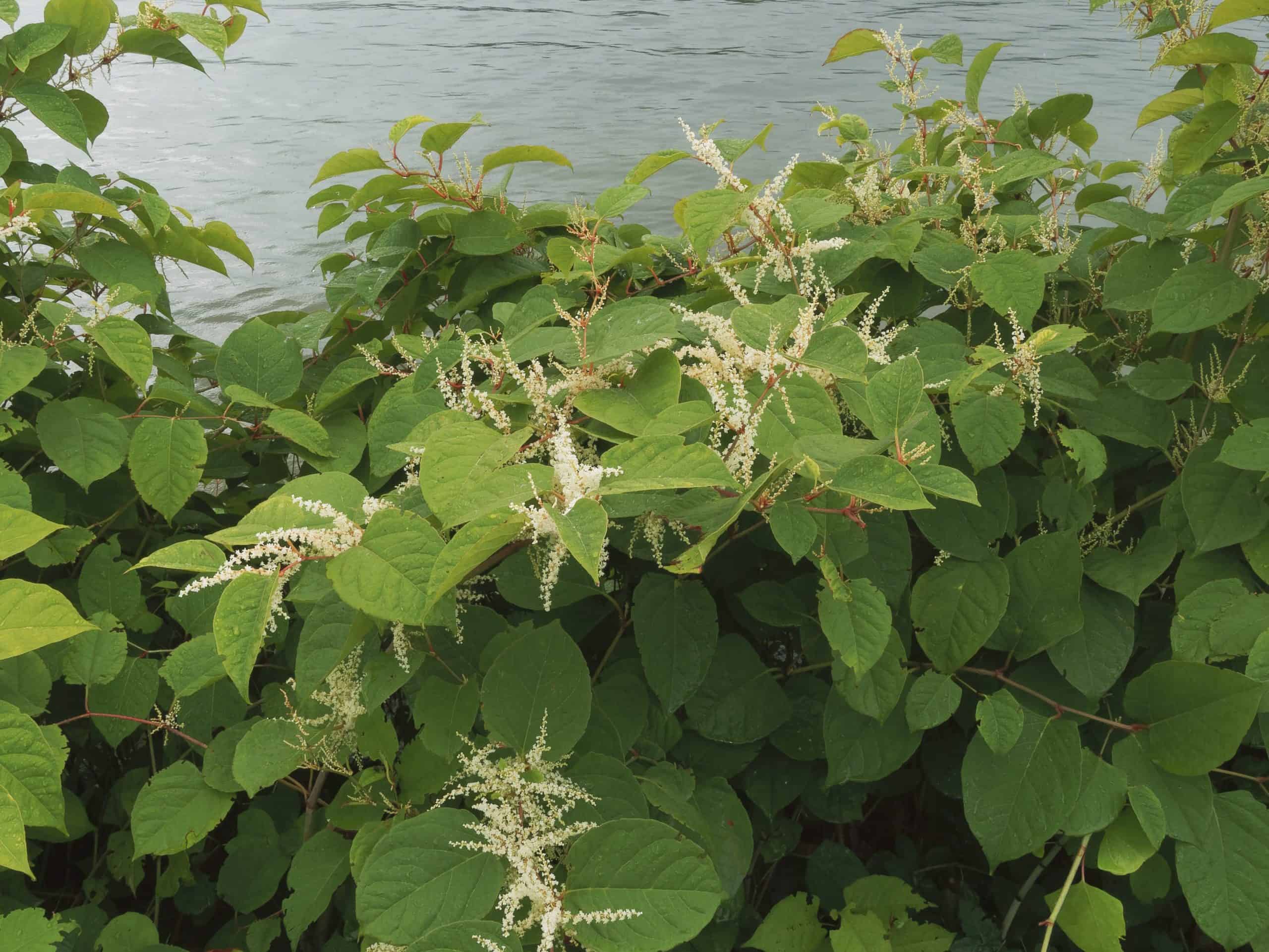
Like many plants, Japanese knotweed undergoes growth cycles that change its appearance, and ability to spread, throughout the year. For example, it is during the summer months that Japanese knotweed growth, and therefore spread, is at its fastest. knotweed plants have the ability to grow up to 10cm a day during the summer which means it can quickly and easily overwhelm competitor plants and threaten structural boundaries.
While it is true to say that Japanese knotweed root systems grow extensively, by up to three metres deep and up to seven metres in all other directions, it is very difficult to accurately assess how quickly it achieves this. This is quite simply because the Japanese knotweed root system grows underground, making its growth progress difficult to measure. However, what we do know is that disturbance of the Japanese knotweed rhizome network encourages its spread and grow, both above and below ground.
How far can Japanese knotweed spread?
The spread of Japanese knotweed knows no limits. As outlined above, Japanese knotweed seeds are not the cause of its spread in the UK, but rather it is spread through the disturbance of its underground rhizome network. Given the knotweed plant’s hardy nature, and its ability to thrive in adverse temperatures and locations, unchecked it would continue to grow infinitely. The fact that Japanese knotweed is defined as an invasive weed supports the idea that it would continue growing, spreading and causing damage until it was removed.
Although Japanese knotweed’s capacity for spread is immeasurable, we can be clear about the size and spread of each plant or infestation. Above ground each Japanese knotweed cane can grow to approximately 2.1metres, or 7 foot, high during its peak growing season of summer. Underground the Japanese knotweed’s root system can spread to 3 metres deep and to a circumference of 7 metres.
Because Japanese knotweed seeds are not the cause of its spread, its capacity to spread geographically is a lot greater. A seed would only naturally disperse in a relatively small area, but soil containing a rhizome fragment could be dug up and relocated anywhere nationwide. As a result of this Japanese knotweed is a serious problem across the UK with there being only very few regions of that remain Japanese knotweed free.
Can Japanese knotweed spread by seeds?
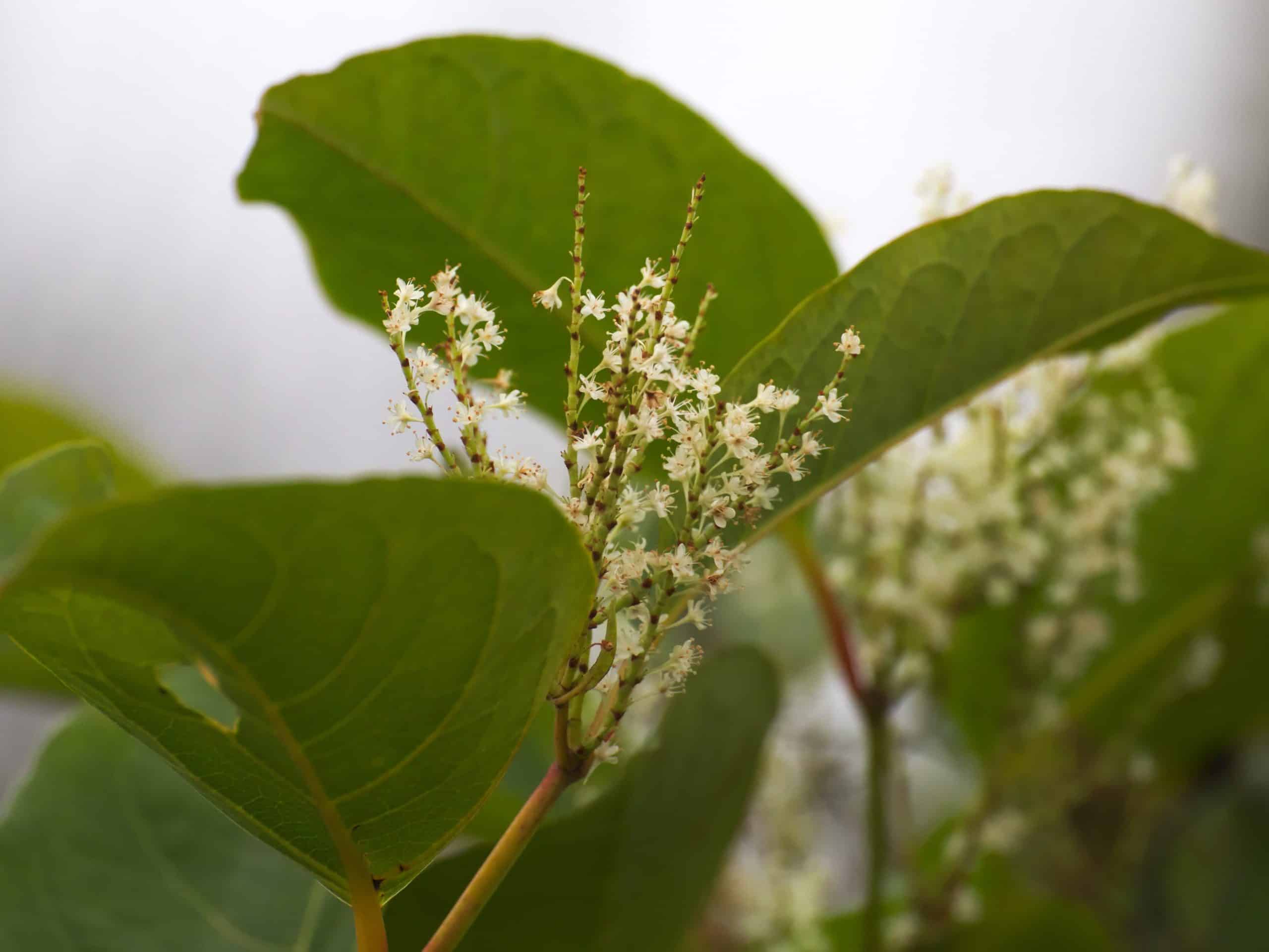
In its native home of Japan, Japanese knotweed has the ability to spread by seed dispersal. Japanese knotweed is a gynodioecious plant, meaning that is has both female and hermaphrodite forms which both thrive in Japan. When the two variants of the weed are in close proximity they are able to spread via their seeds. However, this doesn’t happen to UK Japanese knotweed, simply because only the female version of the plant was imported in the 1800’s.
Japanese knotweed is certainly not limited by its inability to spread via seeds, and instead spreads rapidly when its root system, stems or crowns are disturbed. When the area around a knotweed infestation is disturbed, a fragment of knotweed rhizome as small as 2mm could cause the spread and establishment of a new infestation.
Because Japanese knotweed seeds are not the cause of its spread, its capacity to spread geographically is a lot greater. A seed would only naturally disperse in a relatively small area, but soil containing a rhizome fragment could be dug up and relocated anywhere nationwide. As a result of this Japanese knotweed is a serious problem across the UK with there being only very few regions of that remain Japanese knotweed free.
Can animals spread Japanese knotweed in their excrement?
It Is possible for animals to increase the spread of Japanese knotweed through their faeces.
Most of this article has focused on how Japanese knotweed’s root system is responsible for its spread. However, it is unlikely that the knotweed’s rhizome is responsible for the spread in relation to animals. This is principally because most animals do not have access to the rhizomes. The knotweed’s rhizome system grows underground and as such it is unlikely that animals would have ample access to eat it. However, we know that Japanese knotweed can also spread through its stems and crowns, both of which grow above ground.
It most likely that the spread of Japanese knotweed occurs via animals when they eat the weed’s stems and crowns. Although knotweed is visible all year round, it starts to grow in spring and thrives in the summer. These months represent a greater risk in terms of animal transference than autumn or winter because the knotweed will be soft enough for them to eat and digest.
Additionally, animals could increase the spread of Japanese knotweed by trampling on disturbed land and moving rhizome fragments on their feet for fur. We have seen cases in the UK where rats and badgers have also caused Japanese knotweed to spread as they dig and burrow.
Of course, this nature of spread is very difficult to control or minimize. The only effective way of preventing animal spread of knotweed is to ensure that any Japanese knotweed you are responsible for is adequately treated or removed.
Can Japanese knotweed spread on shoes?
Japanese knotweed can be spread on shoes, tyres or other surfaces that come in to contact with the soil around Japanese knotweed.
Transference and spread can occur like this surprisingly easily. If ground works are being undertaken in the proximity of Japanese knotweed, then this remains a risk even if best practice guidance regarding removing Japanese knotweed is followed. We know that Japanese knotweed has an extensive underground rhizome network which far surpasses the scale of the above ground plant, and if it is disturbed even a very small fragment of rhizome can be responsible for the plant’s spread. During redevelopment of land the knotweed’s root system could be disturbed and brought to the surface of the soil. If this happens it can easily be trodden into the sole of a shoe, or stick to the tread of a tyre, and be spread and transferred to a new location in this manner.
Strict cross-contamination measures need to be implemented when treating and remediating sites affected by Japanese knotweed, including specialist foot wash stations, vehicle wheel washing, signage and fencing erected to contain this invasive plant species.
How to stop Japanese knotweed growing?

The only way to stop Japanese knotweed from growing is to remove the weed either via treatment or excavation. The first step is to identify it correctly.
Japanese knotweed can easily be confused with other similar plants at first glance, such as Himalayan knotweed, Russian Vine and Bindweed. It is important to consider the characteristics of Japanese knotweed to correctly identify the plant as it is a highly invasive, fast-growing weed which can grow at speeds of 10cm a day. Its aggressive growing ability can lead to costly damage to property and infrastructure.
Japanese knotweed is more easily identifiable in Spring when red buds emerge into new shoots. Japanese knotweed shoots take the form of reddish-purple shoots sprouting from the ground.
These shoots grow rapidly at speeds of up to 10cm a day. Early growth leaves are red or light green in colour. Japanese knotweed leaves are shovel, or heart, shaped and have a spear-like tip.
Japanese knotweed is fully grown in the summer, the canes are matured and hollow and hold a distinctive purple speckle. They can grow up to three or four metres high. In late summer, and throughout Autumn, the Japanese knotweed flowers creating clusters of small creamy-white flowers. Japanese knotweed roots or rhizomes are the extensive underground part of the plant. The rhizome is bright orange or yellow. The nodes are usually spaced approximately one or two centimetres apart
By late Autumn the Japanese knotweed’s flowers drop. Their leaves start to turn yellow, before turning brown and eventually falling off. At this stage the Japanese knotweed identification can become more difficult. However, during winter months Japanese knotweed can still be identified by their hollow, brown brittle canes.
Once you’ve correctly identified Japanese knotweed, the next step is to understand how to treat, or remove, it. We strongly recommend that you do not try Japanese knotweed disposal on your own. There are DIY Japanese knotweed removal methods available, however it usually takes a number of years to fully treat and remove, as well as there being strict laws of disposal of Japanese knotweed.
Japanese knotweed can re-grow from cuttings as small as 2mm, meaning the smallest traces can lead to new growth. Japanese knotweed is one of the hardest invasive plants to fully remove from your property. It’s fast growing ability means it can fully take control of your land if not treated early. This can lead to potential Japanese knotweed damage to your property, a decrease in property value or costly legal battles if you have allowed knotweed to spread to a neighbouring property.
Japanese knotweed can sprout from as little as 2mm of rhizome, meaning it is classed as “controlled waste” under the Environmental Protection Act of 1990 and must only be disposed of into licensed landfill sites to stop further spread. Any attempts to remove the knotweed plant should therefore be carried out by licensed professionals. If any small portion of the plant is left in the soil, even a few inches, it can very quickly re-sprout. Only killing the entire underground root system will guarantee the removal of the plant.
It is the Japanese knotweed’s complicated network of roots (rhizomes) which make it especially difficult to remove; it is reasonable to think that by pulling up the plant on sight the problem will be solved. However, this approach doesn’t take in to account the extensive roots of the plant which will lead to regrowth. Equally, cutting the Japanese knotweed back will offer a temporary solution to the problem, but is likely to do more harm than good. When Japanese knotweed is strimmed back there is a risk of spreading the knotweed resulting in a more aggressive and larger infestation. If any neighbouring land were to subsequently grow Japanese knotweed then you would be legally responsible and liable for the spread.
For the reasons mentioned above, along with the fact that Japanese knotweed is classified as controlled waste, we would always recommend using an experienced Japanese knotweed removal specialist to treat the problem. The nature of disposal will depend upon the scale and position of the infestation, as well as the future use of the land and the timescale around this.
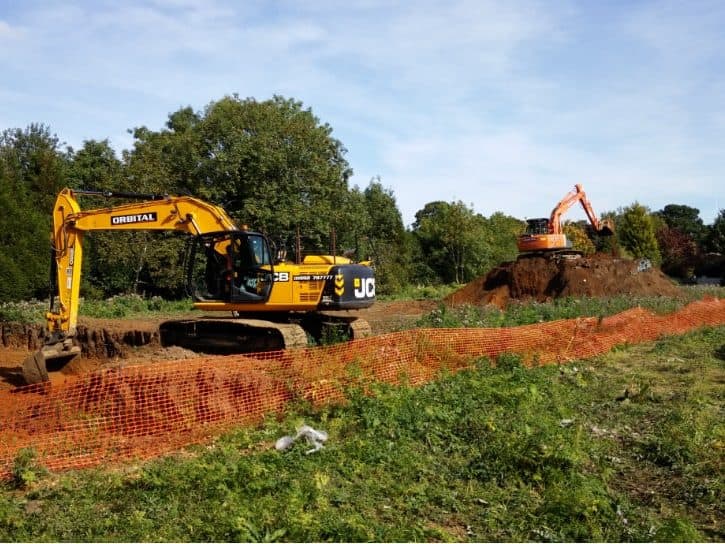
On commercial development sites we would nearly always recommend complete Japanese knotweed removal. Whereas, for our residential clients we are more likely to implement a 5 year Japanese knotweed treatment programme. Following one of our in-depth surveys, we will select the best removal plan dependant on the extent of the infestation.
Our specialist team will often use a variety of approaches for eliminating the weed, to control the spread on your property. These methods will commonly include spraying or injecting the plant with a licenced, commercial glyphosate- based herbicide. Repeat applications of herbicide cause the plant to become stunted and reduce its capacity to photosynthesise and therefore regenerate. You can expect over the course of 3 years the plant will completely die back.
The Japanese knotweed treatment season starts in late April to early May and runs through to the Autumn. Crucially, by using a professional Japanese knotweed removal company, rather than treating on your own, you will receive a 10 year Insurance Backed Guarantee upon completion of the treatment or removal programme. This is useful for providing piece of mind but essential if the treated land or property going to be sold.
When selling a property that has a Japanese knotweed infestation in the garden it is a legal obligation to disclose this on the TA6 Property Information Form. Solicitors, your possible buyers, and their mortgage lending company will therefore be aware of the weed’s presence.
Securing a mortgage for a property which has Japanese knotweed within its boundary can be difficult because of the disruption and knotweed damage that can be caused over time. Japanese knotweed can push through tarmac and paving, damage and crack drainage systems, exploit weaknesses in concrete surfaces, damage boundary brick walls and can significantly impact what can be done within a garden in relation to landscaping. However, most mortgage lenders will issue a Japanese knotweed mortgage as long as there is an accredited 5-year invasive plant removal plan in place as well as a 10-year Insurance Backed Guarantee. This must be carried out by an experienced Japanese knotweed specialist, who is a member of the Property Care Association.
